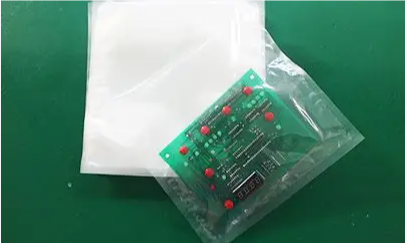Organic Solderability Preservative (OSP) is a popular surface finish for printed circuit boards (PCBs) due to its cost-effectiveness and eco-friendly nature. However, OSP-coated PCBs are sensitive to environmental factors, which can degrade their quality over time if not stored and handled properly. So, how can you extend the OSP shelf life and ensure your PCBs remain in optimal condition? The key lies in proper PCB storage, handling, humidity control, temperature control, and packaging practices. In this comprehensive guide, we’ll walk you through the best practices to protect your OSP-coated PCBs and maintain their performance for as long as possible.
Why OSP Shelf Life Matters for PCB Longevity
OSP is a thin organic layer applied to the copper surfaces of a PCB to prevent oxidation and ensure solderability during assembly. Unlike other surface finishes like gold plating or immersion silver, OSP is more susceptible to environmental damage, such as moisture and high temperatures, which can cause the coating to break down. Once the OSP layer degrades, the underlying copper can oxidize, leading to poor solderability and potential failures in the final product.
Typically, the shelf life of OSP-coated PCBs ranges from 3 to 6 months under ideal conditions. However, improper PCB storage or handling can significantly shorten this period. By following best practices for OSP humidity control, OSP temperature control, and PCB packaging, you can extend the shelf life and avoid costly rework or scrap.

Understanding the Factors That Affect OSP Shelf Life
Before diving into the best practices, it’s important to understand the primary factors that impact the shelf life of OSP-coated PCBs. These include:
- Humidity: Excess moisture in the air can penetrate the OSP coating, leading to oxidation of the copper underneath. High humidity levels above 70% are particularly damaging.
- Temperature: Elevated temperatures can accelerate the degradation of the OSP layer. Prolonged exposure to temperatures above 30°C (86°F) can reduce shelf life drastically.
- Contaminants: Dust, corrosive gases, and fingerprints from improper handling can compromise the OSP layer, making it less effective at protecting the copper.
- Packaging: Inadequate PCB packaging can expose boards to environmental hazards, speeding up degradation.
By addressing these factors through proper PCB handling and storage techniques, you can maximize the lifespan of your OSP-coated boards.
Best Practices for Extending OSP Shelf Life
Let’s explore actionable strategies to ensure your OSP-coated PCBs remain in top condition. These tips focus on optimizing PCB storage, handling, and environmental controls.
1. Optimize OSP Humidity Control
Humidity is one of the biggest enemies of OSP-coated PCBs. When relative humidity (RH) exceeds 70%, moisture can seep into the organic coating, leading to copper oxidation. To maintain OSP shelf life, aim to keep humidity levels between 40% and 60% in your storage environment.
How to Achieve Proper Humidity Control:
- Use dehumidifiers or climate-controlled storage rooms to regulate humidity levels.
- Store PCBs in sealed, moisture-barrier bags with desiccant packs to absorb any residual moisture. Silica gel packs are a common and effective choice.
- Monitor humidity levels regularly using a hygrometer to ensure they remain within the safe range.
By prioritizing OSP humidity control, you can significantly reduce the risk of moisture-related damage and extend the shelf life of your PCBs.

2. Maintain OSP Temperature Control
Temperature plays a critical role in preserving the integrity of OSP coatings. High temperatures can cause the organic layer to break down faster, while extremely low temperatures may affect the material properties of the PCB. The ideal storage temperature for OSP-coated PCBs is below 25°C (77°F), with a recommended range of 18°C to 22°C (64°F to 72°F).
Tips for Effective Temperature Control:
- Store PCBs in a temperature-controlled environment, such as a dedicated storage room with air conditioning.
- Avoid placing PCBs near heat sources like machinery, radiators, or direct sunlight.
- If temperature fluctuations are unavoidable, use insulated storage containers to minimize exposure to extreme conditions.
Consistent OSP temperature control helps prevent thermal stress and maintains the protective qualities of the coating over time.
3. Use Proper PCB Packaging for OSP Protection
Packaging is your first line of defense against environmental hazards. Poor PCB packaging can expose OSP-coated boards to moisture, dust, and physical damage, shortening their shelf life. The right packaging materials and techniques can make a significant difference in preserving board quality.
Best Practices for PCB Packaging:
- Use vacuum-sealed, anti-static, moisture-barrier bags to protect PCBs from humidity and electrostatic discharge (ESD).
- Include desiccant packs inside the packaging to absorb moisture, especially for long-term storage.
- Label packages with the date of manufacture and storage conditions to track shelf life and ensure timely use.
- For added protection, consider using foam or bubble wrap to cushion the boards and prevent physical damage during transport or storage.
Effective PCB packaging for OSP-coated boards not only extends shelf life but also ensures they remain ready for assembly when needed.

4. Implement Careful PCB Handling Practices
Improper PCB handling can introduce contaminants like fingerprints, oils, or dirt, which can degrade the OSP coating. Even small amounts of contamination can affect solderability and lead to assembly issues. Establishing strict handling protocols is essential for maintaining OSP shelf life.
Guidelines for Safe PCB Handling:
- Always wear clean, lint-free gloves when handling OSP-coated PCBs to avoid leaving fingerprints or oils on the surface.
- Use anti-static wrist straps or mats to prevent ESD, which can damage sensitive components or the coating.
- Avoid touching the copper areas directly, as even minor contact can compromise the OSP layer.
- Handle boards by their edges to minimize contact with critical areas.
By following these PCB handling practices, you can prevent unnecessary damage and ensure your boards remain in pristine condition.
5. Store PCBs in a Clean, Controlled Environment
Beyond humidity and temperature control, the overall storage environment plays a vital role in extending OSP shelf life. Dust, corrosive gases, and other airborne contaminants can settle on the PCB surface and degrade the OSP coating over time.
Storage Environment Tips:
- Store PCBs in a clean, dust-free area away from industrial pollutants or chemicals.
- Use sealed storage cabinets or containers to shield boards from airborne particles.
- Ensure the storage area is free from corrosive gases like sulfur dioxide or hydrogen sulfide, which can react with the copper under the OSP layer.
A controlled storage environment helps maintain the integrity of OSP-coated PCBs, especially during long-term storage.
6. Monitor and Inspect PCBs Regularly
Even with the best storage and handling practices, it’s important to periodically inspect OSP-coated PCBs to ensure they remain in good condition. Regular checks can help identify early signs of degradation, such as discoloration or oxidation, allowing you to take corrective action before the boards become unusable.
Inspection Tips:
- Check for visible signs of OSP degradation, such as a change in color from clear to yellowish or brownish hues.
- Inspect packaging for breaches or moisture buildup that could indicate a problem.
- Use a microscope or magnifying tool to examine the copper surface for signs of oxidation if the OSP layer appears compromised.
Regular monitoring ensures that any issues are caught early, preserving the quality of your PCBs.

Additional Tips to Maximize OSP Shelf Life
In addition to the core practices above, consider these supplementary strategies to further extend the shelf life of your OSP-coated PCBs:
- Baking Before Assembly: If OSP-coated PCBs have been stored for an extended period or exposed to high humidity, baking them at a low temperature (around 105°C to 120°C for 2-4 hours) can remove absorbed moisture and restore solderability. Ensure baking is done according to industry guidelines to avoid thermal damage.
- First-In, First-Out (FIFO) Inventory Management: Use older PCBs before newer ones to prevent any boards from exceeding their shelf life.
- Minimize Storage Duration: While proper storage can extend OSP shelf life, it’s best to use the boards as soon as possible to avoid potential degradation.
Common Mistakes to Avoid with OSP-Coated PCBs
Even with the best intentions, certain common mistakes can undermine your efforts to extend OSP shelf life. Be mindful of the following pitfalls:
- Storing in Uncontrolled Environments: Leaving PCBs in areas with fluctuating humidity or temperature can cause rapid degradation of the OSP layer.
- Skipping Protective Packaging: Storing boards without moisture-barrier bags or desiccants exposes them to environmental hazards.
- Ignoring Handling Protocols: Failing to use gloves or anti-static protection during PCB handling can introduce contaminants or damage.
Avoiding these mistakes ensures that your OSP-coated PCBs remain in optimal condition for assembly.
Conclusion: Safeguarding OSP-Coated PCBs for Long-Term Success
Extending the shelf life of OSP-coated PCBs is achievable with the right combination of PCB storage, handling, and environmental controls. By focusing on OSP humidity control, OSP temperature control, and effective PCB packaging, you can protect your boards from degradation and ensure they remain ready for assembly. Implementing careful handling practices and maintaining a clean, controlled storage environment further enhances OSP shelf life, saving you time and resources in the long run.
Whether you’re managing a small batch of PCBs or a large inventory, these best practices provide a reliable framework for preserving the quality of OSP-coated boards. Start applying these strategies today to maximize the longevity of your PCBs and achieve consistent, high-quality results in your projects.
 ALLPCB
ALLPCB







